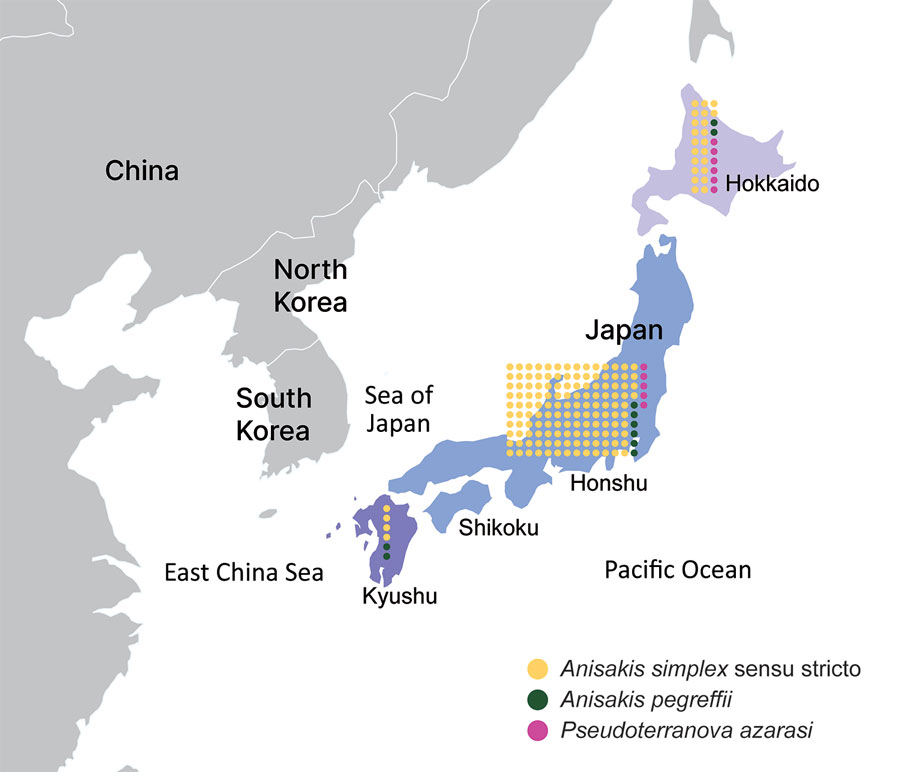Volume 28, Number 10—October 2022
Dispatch
Anisakiasis Annual Incidence and Causative Species, Japan, 2018–2019
Figure 1

Figure 1. Anisakiasis patient number and causative species analyzed in study of anisakiasis in Japan, 2018–2019. Three geographic locations in Japan are noted: Hokkaido Island (North Japan), Honshu and Shikoku Islands (Central Japan), and Kyushu Island (Southwest Japan). Each dot indicates 1 patient, and color indicates the anisakiasis-causing species. Identifications were made at the sibling species level by using PCR and sequencing.
Page created: September 15, 2022
Page updated: September 22, 2022
Page reviewed: September 22, 2022
The conclusions, findings, and opinions expressed by authors contributing to this journal do not necessarily reflect the official position of the U.S. Department of Health and Human Services, the Public Health Service, the Centers for Disease Control and Prevention, or the authors' affiliated institutions. Use of trade names is for identification only and does not imply endorsement by any of the groups named above.